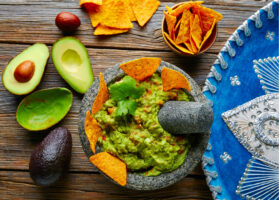Abundance of small fruit causes low pricing on Northwest cherries
Overview of cherries in the U.S. market, complemented by charts from Agronometrics. Original published on July 5, 2023.
“The cherry season is never completely normal,” says Andres Puvogel with Mount Adams Fruit, referring to the cherry crops in Washington and Oregon. “This year, bloom started about two weeks later than normal, which is really late. Not only was it later, it was also super concise.” In a normal year, it takes one variety about seven to ten days to bloom. With some varieties blooming earlier than others, it normally takes a few weeks to go through the entire blooming period. “This year however, bloom was done in about three days,” Puvogel commented. This will also result in a more concentrated harvest. “I expect harvest will last about six weeks instead of two months.” The season started June 15 instead of June 1 and Washington is expected to finish at the end of July.
Low prices
Due to warm weather during bloom, most varieties set well or overset. “Many varieties set very heavily, and we are seeing trees that carry too much fruit, causing sizing to be small.” The Kordia and Regina varieties are an exception. They don’t like the hot weather and experience a light crop this season. An abundance of small-sized fruit causes pricing to be low. “It ranges from $20/box for the smallest size fruit to $50/box for the biggest size. This is very low compared to prices ranging from $30 to $100 per box in an average season,” according to Puvogel. “When you receive $20/box, that doesn’t even pay for picking, so many growers decide to leave the small fruit on the tree.”
Growers who decide to pick the small fruit send it to a processing facility, but facilities for canning and brining (maraschino cherries) are full and don’t accept any more volume at this point. The much smaller freezing segment hasn’t opened yet. With prices being as low as they are, everybody puts their hopes on the late varieties. “Hopefully, prices will improve towards the end of the season.”

Source: USDA Market News via Agronometrics.
(Agronometrics users can view this chart with live updates here)
Export market
Larger size cherries are preferred, both domestically and internationally. “About 20 to 25 percent of our fruit is exported, mainly to Japan, Korea, and China,” said Puvogel. Small volumes also make their way over to Vietnam and Singapore. “While overseas markets prefer larger size fruit, they take a bit of small size fruit as well.”
Overlap with California’s cherry season puts even more downward pressure on pricing. Usually, California and Washington are in the market together for just a few days. This year, the overlap is about two weeks. “Although California’s season is winding down, there is too much fruit from California in the market still.”
Early Robin variety
On LinkedIn, Puvogel posted photos of the Early Robin variety. It’s a bi-colored variety that looks like Rainier, but harvest usually starts five to seven days earlier. “The drawback of Early Robin is that it doesn’t color as well as Rainier and the variety is hard to set. However, this year, it set like never before,” Puvogel shared. This has resulted in a crop that is too heavy, and it took the fruit longer to color up and reach desired sugar levels. It made Early Robin’s benefit of being early disappear and harvest is taking place pretty much around the same time as Rainier, Washington’s main variety.
The News in Charts is a collection of stories from the industry complemented by charts from Agronometrics to help better tell their story.
Access the original article with this (Link)






